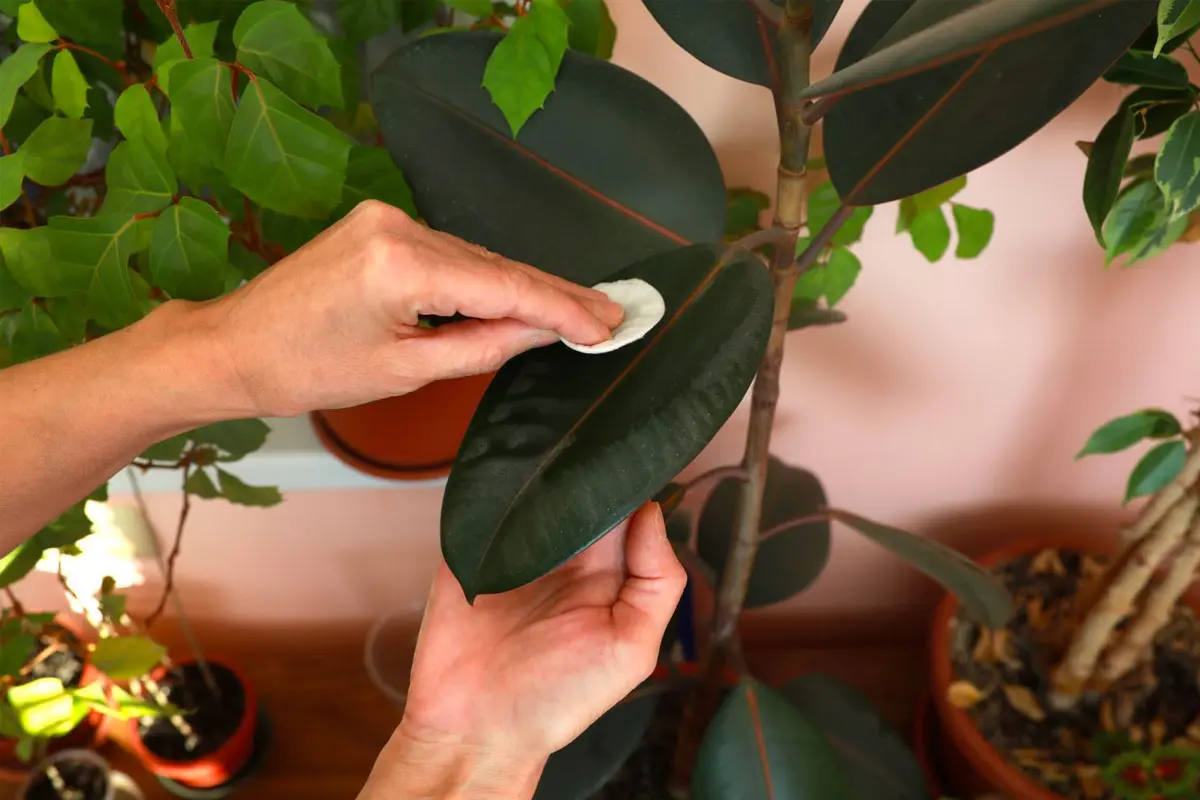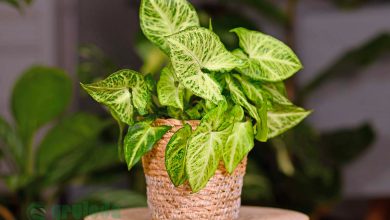Ficus Elastica Robusta Care
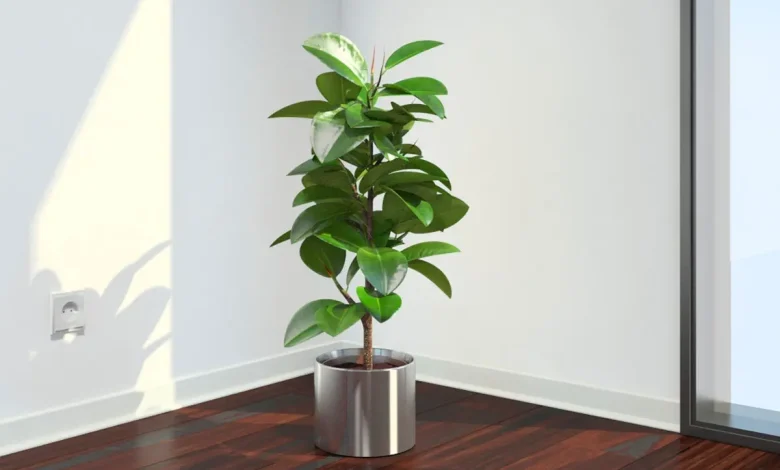
The Ficus Elastica Robusta is a popular houseplant admired for its large, dark green leaves. This easy-care ficus tree is tolerant of less-than-ideal conditions which makes it an excellent choice for beginner gardeners. With the right care and environment, the Ficus elastica robusta can grow into an impressive, focal-point houseplant in any home or office. Here is a complete guide to growing and caring for ficus elastica robusta.
Native Habitat and Growth Conditions
In their native tropical habitat, Ficus elastica robusta grow into huge trees, reaching over 50 feet tall in warm, humid rainforests. They are native to areas of Southeast Asia and northern Australia. Understanding the native growth conditions provides key insights into how to care for them indoors.
Climate
Ficus robusta thrives in warm, humid environments with average temperatures between 60-85°F. They flourish in outdoor zones 10-11 but also adapt well to indoor environments.
Soil
In the wild, Ficus robusta grow in rich, moisture-retentive soils. They thrive in organically rich, loamy soil.
Light
Ficus robusta naturally grow in shaded understories beneath the rainforest canopy. They can adapt to low to moderate light conditions.
Care Requirements for Robusta Ficus As Houseplants
Caring for ficus elastica robusta as a houseplant mimics their preferred natural growing conditions. With the right environment, they will flourish in any home or office.
Potting and Repotting
Robusta ficus should be planted in a pot with drainage holes using a quality potting mix. Repot every 2-3 years in early spring, moving up just one pot size each time to avoid overpotting.
Watering
Water whenever the top few inches of soil feel dry. Water thoroughly until it drains from the bottom holes, then allow to dry out slightly between waterings. Drooping leaves indicate under watering.
Temperature and Humidity
Ideal temperatures are 60-85°F. Average home and office environments are often suitable. Mist leaves or use a pebble tray to boost humidity.
Light
Bright, indirect light keeps ficus robusta healthy but they will adapt to lower light. Rotate periodically to prevent one-sided growth toward light sources.
Fertilizing
Feed monthly in spring and summer with a balanced liquid fertilizer diluted to half strength. Ficus are sensitive to minerals in tap water. Allow water to sit out before using.
Pruning
Trim back overlong stems and shape as needed to maintain size. Prune back leaves that lose color or brown along the edges.
Propagating Ficus Elastica Robusta
Propagating robusta ficus from cuttings or air layering is a great way to create new plants.
Propagating from Cuttings
Take 6-8 inch tip cuttings in spring or summer. Remove lower leaves and place in water or moist potting mix. Keep warm and humid until new roots form.
Propagating from Air Layering
Wrap a section of stem midway along its length with moist sphagnum moss. Wrap again with plastic and secure. New roots should form after 1-2 months. Cut below wrap and pot up.
Common Pests and Diseases
Overall, ficus are resistant to most pests and diseases but can occasionally be affected by the following:
Pests
Mealybugs, aphids, scale and spider mites may appear on leaves and stems. Wipe off with insecticidal soap or neem oil.
Diseases
Bacterial and fungal leaf spot may occur in wet conditions. Improve air circulation and avoid moisture on leaves.
Displaying Ficus Robusta in the Home or Office
The ficus robusta’s broad, glossy leaves and upright form make it an excellent accent or focal point in home and office spaces. Place in well-lit areas away from drafts. Rotate periodically for even growth.
Caring for Ficus Elastica Robusta: Final Tips
Caring for ficus elastica robusta is easy with proper watering, humidity, light and pruning. Allow soil to partly dry out between waterings and mist leaves to boost humidity. Provide bright, indirect light and prune to control size and shape. Repot every 2-3 years in spring using fresh potting mix. With the simple care outlined here, the ficus robusta will thrive for years.
Troubleshooting Common Issues with Ficus Robusta
While robusta ficus are generally easy-going houseplants, they can sometimes develop issues. Here are some common problems and how to fix them:
Yellowing Leaves
If the leaves turn yellow, it often indicates overwatering. Allow the soil to dry out more between waterings. Yellow leaves can also mean too much light. Move to a shadier spot.
Leaf Drop
Some leaf drop is normal but excessive loss of leaves usually signals a cultural issue. Most commonly this is due to dry air, drafts, or drastic temperature changes.
Sparse Foliage
Sparse leaves spaced far apart on long, leggy stems means insufficient light. Rotate the plant to encourage even growth and move to a brighter location.
Leaf Spots
Small brown spots on the leaves can be due to bacterial or fungal infection. Improve air circulation and water plants at the base, keeping moisture off the leaves.
Slow Growth
If your ficus puts out little to no new growth, it likely needs repotting into fresh soil, more fertilizer, or better lighting conditions. Assess its care regimen.
White Fuzzy Growth on Leaves
Mealybugs can infest the leaves, leaving white cottony deposits. Wipe leaves with alcohol or insecticidal soap. Ensure leaves stay dry to prevent future infestations.
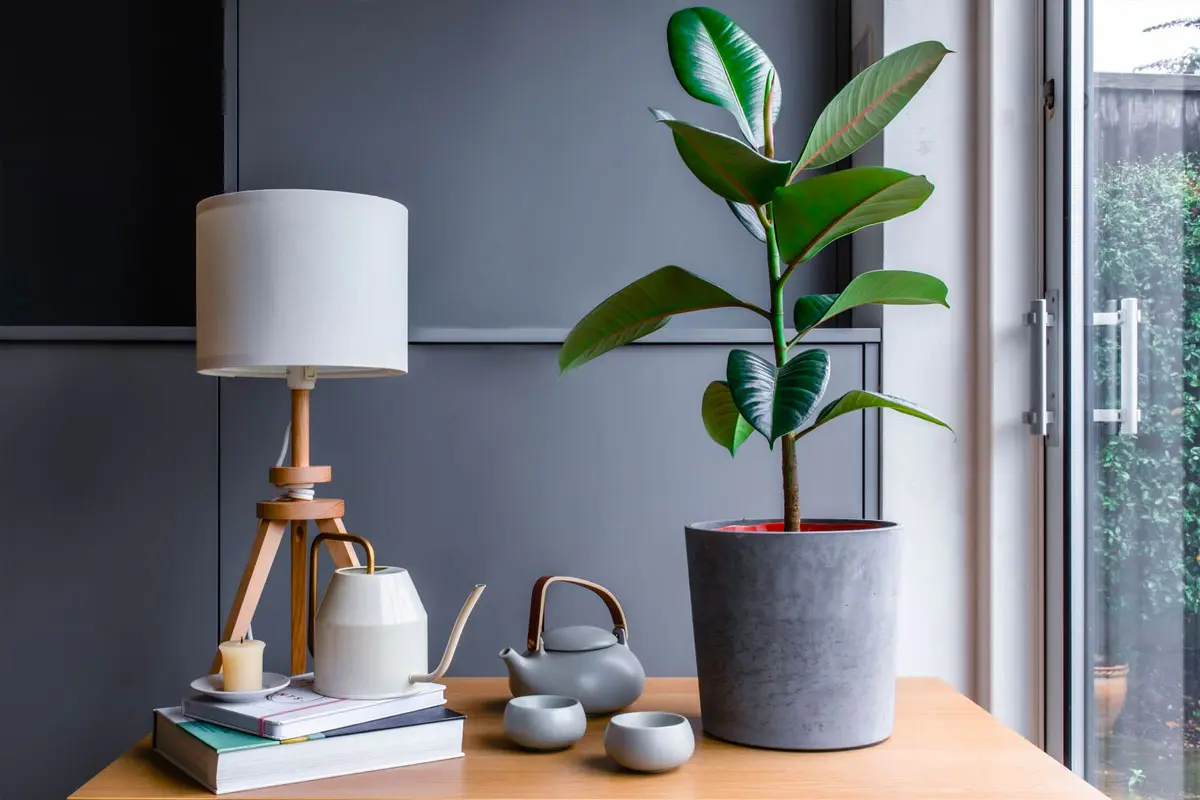
Decorating with Ficus Robusta
The ficus robusta’s striking form makes it a wonderful decorative plant:
Focal Point
Place a robusta ficus in an empty corner or the center of a room to create a bold focal point with its large, glossy leaves.
Complimentary Plantings
Surround your ficus tree with smaller plants like ferns or pilea. The contrast in sizes and leaf textures makes for pleasing design.
Office Plant
The easy-growing nature of the ficus robusta makes it an excellent office plant. It filters airborne toxins and brings life to indoor spaces.
Table Plant
Smaller robusta ficuses kept trimmed through pruning can live beautifully on tabletops or plant stands. Use a decorative cachepot.
The Rewarding Ficus Elastica Robusta
With the proper care outlined here, the ficus elastica robusta becomes a captivating evergreen plant for any indoor space. Its lush leaves and upright form lend exotic jungle vibes. For an easy yet statement-making houseplant, look no further than the ficus robusta!
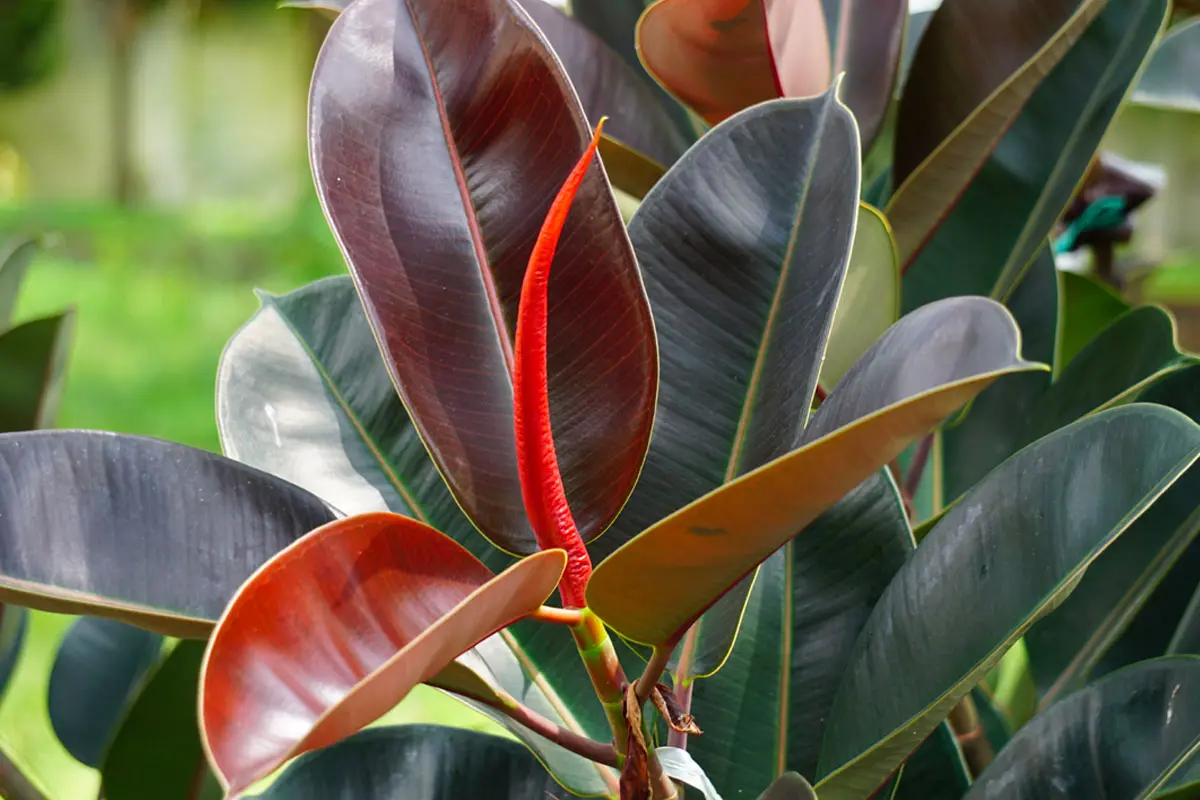
Caring for Large Ficus Robusta Specimens
With proper care, ficus robusta can grow into impressive statement plants in larger spaces:
Repotting Mature Plants
Use a hand truck or get help to move mature robusta ficuses. Repot annually in early spring, sizing up just one pot width each time. Use fresh, high quality potting mix.
Watering Large Plants
Check soil moisture using your finger or a moisture meter. Water thoroughly until it runs from the drainage holes. Mature plants may need watering twice a week in warmer months.
Humidity for Big Ficus
The dense foliage of large ficus transpires readily. Mist leaves daily or place on pebble trays. Use humidifiers in dry rooms.
Rotating Large Plants
Rotate robusta ficuses periodically to prevent leaning toward light sources. Wear gloves when rotating to avoid skin irritation from the sap.
Transporting Big Ficus
Carefully tilt and move using hand trucks or lifting aids. Protect branches with towels. Move slowly to avoid tearing leaves or branches.
Pruning Large Ficus
Trim back overlong branches in early spring using sharp pruners. Remove crossed or congested inner branches to encourage healthy growth.
Caring for Ficus Robusta Outdoors
In zone 10 and warmer, ficus robusta can be grown outside as landscape plants:
Planting Outdoors
Select a site protected from wind and cold. Amend soil with compost to improve drainage. Plant at the same level it grew in its container.
Outdoor Watering
Establish regular watering for the first year. Water deeply 2-3 times per week in warmer months, allowing soil to partly dry out between waterings.
Fertilizing Outdoors
Fertilize 3 times per year – in early spring, mid summer, and fall. Use a balanced granular fertilizer scattered beneath the plant’s canopy.
Hardiness Concerns
In zone 10 and warmer, ficus robusta can remain outside year round. In zone 9, it should be moved indoors or protected when temps dip below 30°F.
Pruning Outdoor Ficus
Trim to control size and shape in early spring. Remove dead or damaged growth anytime. Avoid excess pruning that can leave it vulnerable to sunburn.
The Majestic Ficus Robusta
With appropriate care, the ficus elastica robusta transforms into a statuesque evergreen tree. Its resilience and lush tropical foliage contribute year-round interest indoors or out. This magnificent plant is sure to become a prized feature of any environment.
Frequently Asked Questions
How fast does ficus robusta grow?
Ficus robusta is a fast growing tree and can grow up to 3 feet per year until mature. Expect 6-12 inches of new growth annually with proper care.
Why are the leaves on my ficus robusta falling off?
Leaf drop can result from changes in light, underwatering, overwatering, dry air or drafts. Stabilize conditions and new leaves should resume growing.
Why is my ficus robusta getting leggy?
Leggy growth results from low light. Provide bright, indirect light to encourage full, compact growth. Rotate the plant and prune elongated stems.
How do I get my ficus robusta to branch out?
Prune the main stem back above a node to encourage branching and bushier growth. You can also propagate stem cuttings to produce new plants.
What is the best fertilizer for ficus robusta?
Use a balanced liquid houseplant fertilizer diluted to half strength. Feed monthly through the growing season. Ensure proper watering and light as well.



